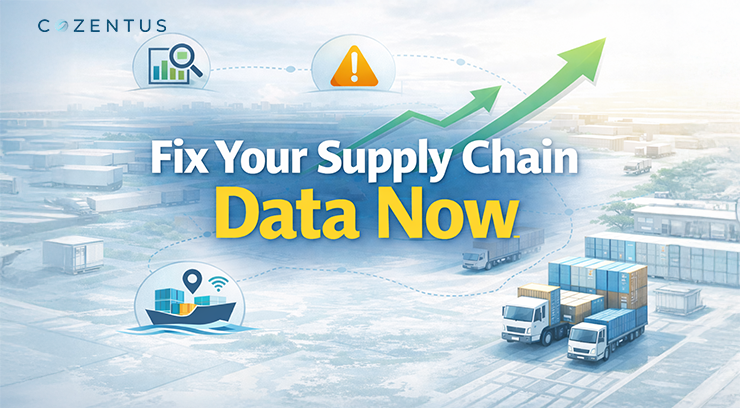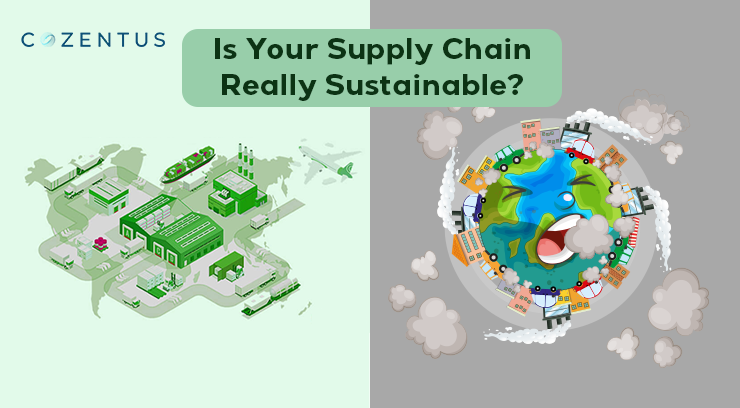Over 90% of Global transportation is still dependent on fossil fuels. It is responsible for about 25% of all energy emissions and with the growing cross boarder transportation emissions are on the rise only. The notion that supply networks traverse international borders to convey goods and services to power the current global economy is not overstated.
Supply chain optimisation is often low-hanging fruit for businesses wanting to make substantial progress toward sustainability goals. But where to begin?
The right tools are very important to analyse the data and identify the areas where emissions can be reduced. – after all, you must identify the areas of the problems before you can solve them.
The sustainability of a business now requires a sustainable supply chain.
Supply chain sustainability includes managing the environmental, social, and economic implications of producing and delivering products and services to the market and adhering to rules that support long-term company operations. Fostering supply chain sustainability requires businesses to connect with their stakeholders, including raw material producers. Real-time supply chain visibility plays a crucial role. It has changed how organisations execute logistical operations. Organisations that do not adopt this cutting-edge technology suffer considerable challenges, an inability to stay up with the competition, and inefficiencies in numerous areas of the organisation. Without real-time supply chain visibility and control, mistakes in supply chain planning and monitoring would seep in, resulting in resource waste and revenue loss. Customer turnover, Incorrect KPI deliveries benchmarking, delivery delays, rising overhead expenses and increased transportation dangers are all the obstacle logistics face where visibility is not given its due importance.
Here are five actions that Cozentus is doing to achieve supply chain sustainability in businesses:
Plan out a detailed supply chain map and establish key objectives
The first stage in any transformation process should be a thorough awareness of the company's present operational reality. Begin by charting the movement of products from the producer to the customer to create a sustainable supply chain and maintaining sustainability as the primary goal of this supply chain mapping. Paying attention to resource use, unproductive behaviours, and process efficiency suggests focusing on sustainability. This kind of sustainability-focused mapping will assist the company in tracking how labour and resources are utilised at each level of the supply chain and identifying particular areas for improvement.
The next step is to create measures and KPIs. Sustainability benchmarking is essential for any meaningful assessment of KPIs. Implement a governance structure to manage and oversee the success of sustainability initiatives. Periodic monitoring of KPIs/KRAs assists the firm in identifying portions of the supply chain that are underperforming.
Work with suppliers
All providers in the network must embrace sustainable practices for the sustainable supply chain to succeed. Businesses must engage their suppliers and promote the adoption of sustainable practices by establishing compliance criteria and performance measures and performing frequent audits.
Making use of technology
Because of the breadth and complexity of global supply networks, supply chain technology must identify areas of weakness and possibilities to enhance supply chain management.
When a company has hundreds of first-tier suppliers, gathering information on their performance might be difficult. In this case, cloud-based software solutions may make it easier to acquire real-time data for evaluating supply chain performance. Businesses must use data analytics and AI/ML-powered systems to discover the most efficient and sustainable shipping routes. Data may also assist in identifying the issues of sustainable supply chain management, such as improving process efficiency via resource sharing across supply chain partners (for example, through pooled shipping/warehousing, etc.). Reduced emissions may have a significant influence on sustainability objectives.
Encourage collaboration networks
The beneficial environmental effect of one sustainable firm may double via cooperation across all enterprises in the sector or even across industries. Supply chains between companies in the same sector might share. Collaboration among firms on supply chain sustainability concerns will encourage the growth of environmentally friendly sustainability standards and practices. Collaboration across sectors aids in the recycling and reusing of things after their primary function has been fulfilled. Reusing wasted resources enhances recycling and supply chain sustainability.
Creating a sustainable supply chain is not a one-time event. Benchmarks change, measurements must refine, training must be continual, and the whole process must be iterated. Sustainable supply chains have both an environmental and a commercial impact by lowering operational expenses. Many firms believe that growing sustainability without raising expenses is unattainable. However, this is not the case. Join me in this conversation on LinkedIn and share your thoughts with me.
Recent Post
Subscribe to our newsletter
Stay updated on latest trends and news in the supply chain and logistics industry
Join our mailing list for monthly updates
Download Reports
AI-Powered Intelligent Document Processing -Your Launchpad to Digital Transformation
Download






